Potřebujeme váš souhlas k využití jednotlivých dat, aby se vám mimo jiné mohly ukazovat informace týkající se vašich zájmů. Souhlas udělíte kliknutím na tlačítko „OK“.
ASTM D495-14
Standard Test Method for High-Voltage, Low-Current, Dry Arc Resistance of Solid Electrical Insulation
Automaticky přeložený název:
Standardní zkušební metoda pro vysoké napětí, slaboproudé, Dry Arc Odpor Solid elektrickou izolací
NORMA vydána dne 1.4.2014
Informace o normě:
Označení normy: ASTM D495-14
Poznámka: NEPLATNÁ
Datum vydání normy: 1.4.2014
Kód zboží: NS-29249
Počet stran: 10
Přibližná hmotnost: 30 g (0.07 liber)
Země: Americká technická norma
Kategorie: Technické normy ASTM
Kategorie - podobné normy:
Anotace textu normy ASTM D495-14 :
Keywords:
rc resistance, dry arc resistance, high voltage, low current, stainless steel electrodes, tungsten rod electrodes, ICS Number Code 29.035.01 (Insulating materials in general)
Doplňující informace
| Significance and Use | ||||||||||
|
4.1 The high-voltage, low-current type of arc resistance test is intended to simulate only approximately such service conditions as exist in alternating current circuits operating at high voltage, but at currents limited to units and tens of milliamperes. 4.2 In order to distinguish more easily among materials that have low arc resistance, the early stages of this test method are mild, and the later stages are successively more severe. The arc occurs intermittently between two electrodes resting on the surface of the specimen, in normal or inverted orientation. The severity is increased in the early stages by successively decreasing to zero the interval between flashes of uniform duration, and in later stages by increasing the current. 4.3 Four general types of failure have been observed: 4.3.1 Many inorganic dielectrics become incandescent, whereupon they are capable of conducting the current. Upon cooling, however, they return to their earlier insulating condition. 4.3.2 Some organic compounds burst into flame without the formation of a visible conducting path in the substance. 4.3.3 Others are seen to fail by “tracking,” that is, a thin wiry line is formed between the electrodes. 4.3.4 The fourth type occurs by carbonization of the surface until sufficient carbon is present to carry the current. 4.4 Materials often fail within the first few seconds after a change in the severity stage. When comparing the arc resistance of materials, much more weight shall be given to a few seconds that overlap two stages than to the same elapsed time within a stage. Thus, there is a much greater difference in arc resistance between 178 and 182 s than between 174 and 178 s. 1.1 This test method covers, in a
preliminary fashion, the differentiation of similar materials’
resistance to the action of a high-voltage, low-current arc close
to the surface of insulation, when a conducting path is formed
causing the material to become conducting due to the localized
thermal and chemical decomposition and erosion.
1.2 The usefulness of this test method is very severely limited by many restrictions and qualifications, some of which are described in the following paragraphs and in Section 5. Generally, this test method shall 1.3 This test method will not, in general, permit conclusions to be drawn concerning the relative arc resistance rankings of materials that are potentially subjected to other types of arcs: for example, high voltage at high currents, and low voltage at low or high currents (promoted by surges or by conducting contaminants). 1.4 The test method is intended, because of its convenience and the short time required for testing, for preliminary screening of material, for detecting the effects of changes in formulation, and for quality control testing after correlation has been established with other types of simulated service arc tests and field experience. Because this test method is usually conducted under clean and dry laboratory conditions rarely encountered in practice, it is possible that the prediction of a material's relative performance in typical applications and in varying “clean to dirty” environments will be substantially altered (Note 1). Caution is urged against drawing strong conclusions without corroborating support of simulated service tests and field testing. Rather, this test method is useful for preliminary evaluation of changes in structure and composition without the complicating influence of environmental conditions, especially dirt and moisture. 1.5 While this test method uses dry,
uncontaminated specimen surfaces, Test Method D2132, Test Methods
D2303, and Test Method D3638 employ wet, contaminated specimen
surfaces. Their use is recommended for engineering purposes and to
assist in establishing some degree of significance to this test
method for quality control purposes.2
1.6 This test method is not applicable to materials that do not produce conductive paths under the action of an electric arc, or that melt or form fluid residues that float conductive residues out of the active test area thereby preventing formation of a conductive path. 1.7 The values stated in inch-pound units are to be regarded as standard. The values given in parentheses are mathematical conversions to SI units that are provided for information only and are not considered standard. 1.8 This standard does not
purport to address all of the safety concerns, if any, associated
with its use. It is the responsibility of the user of this standard
to establish appropriate safety and health practices and determine
the applicability of regulatory limitations prior to use.
Standard Terminology Relating to
Electrical Insulation Standard Test Method for Dust-and-Fog
Tracking and Erosion Resistance of Electrical Insulating
Materials Standard Practice for Conditioning
Electrical Insulating Materials for Testing Standard Test Method for Comparative
Tracking Index of Electrical Insulating Materials (Includes all
amendments and changes 2/2/2022). Standard Test Methods for
Liquid-Contaminant, Inclined-Plane Tracking and Erosion of
Insulating Materials (Includes all amendments and changes
5/5/2021). |
Podobné normy:
Historická
1.9.2012
Historická
1.11.2013
Historická
1.4.2013
Historická
1.8.2011
Historická
1.5.2014
Historická
1.1.2012
Doporučujeme:
Aktualizace technických norem
Chcete mít jistotu, že používáte pouze platné technické normy?
Nabízíme Vám řešení, které Vám zajistí měsíční přehled o aktuálnosti norem, které používáte.
Chcete vědět více informací? Podívejte se na tuto stránku.


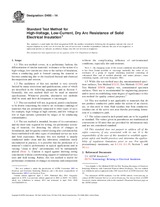
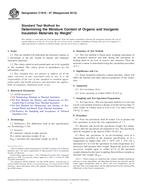 ASTM C1616-07(2012)..
ASTM C1616-07(2012)..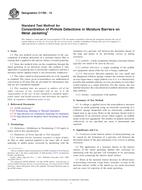 ASTM C1785-13
ASTM C1785-13 ASTM D149-09(2013)..
ASTM D149-09(2013)..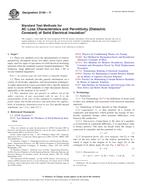 ASTM D150-11
ASTM D150-11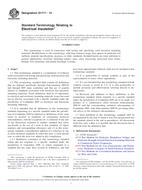 ASTM D1711-14
ASTM D1711-14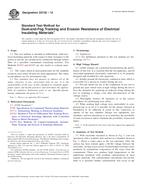 ASTM D2132-12
ASTM D2132-12
 Cookies
Cookies
